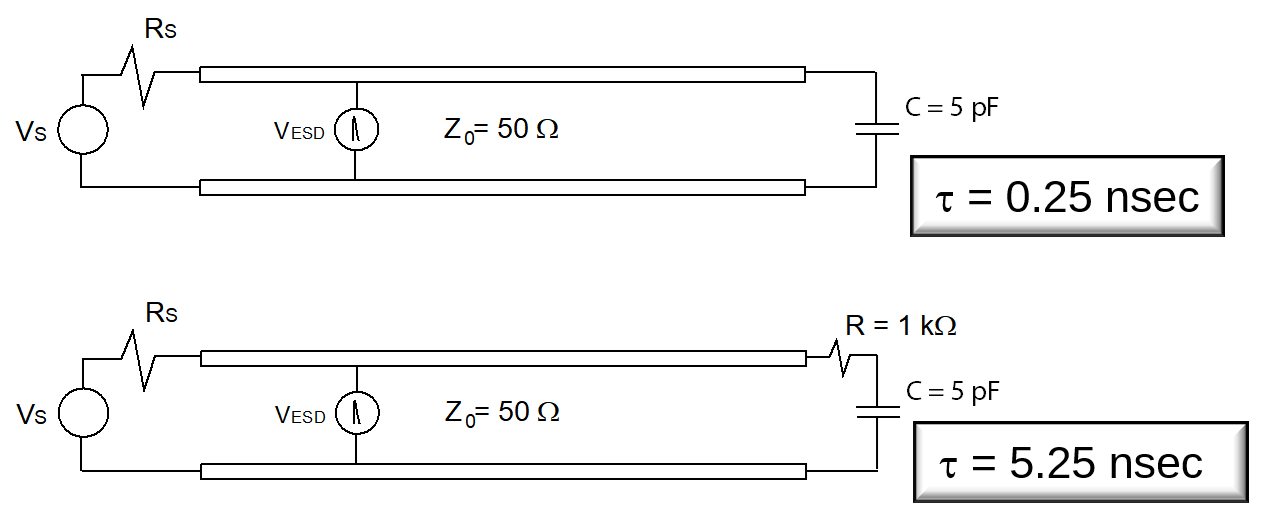EMC Question of the Week: June 15, 2020

The best component to use to protect the RESET input of a microcontroller from indirect ESD events is usually a
- resistor
- capacitor
- varistor
- ferrite bead
Answer
The best answer is "a". Field coupling from an ESD event happens very fast. Generally, the strongest coupling occurs within the first 1 or 2 nanoseconds. The connection inductance of any capacitor or varistor connected in parallel with the RESET input can prevent these devices from responding in time. A series resistor, on the other hand, works with the input capacitance of the microcontroller to slow the transition time associated with any coupled transient. Slowing the transition time to 10 nanoseconds or longer prevents transients lasting only a few nanoseconds from accidentally resetting the microcontroller.
A series resistor also blocks clock harmonics and other internal controller noise from getting on to the RESET trace where it can be carried to other parts of the circuit board. This can be as important, or even more important, than the ESD benefit.
A ferrite bead might also work depending on the situation, but ferrites are inherently non-linear and their transient response is less predictable. They can look inductive at some frequencies and, in most cases, shouldn't be placed in series with capacitive loads. In addition, ferrites generally cost more and take up more space than resistors.
Of course, series resistors are not effective for protecting resistive inputs or high-frequency signal inputs. Those inputs are often naturally immune to single-event disruptions like field-coupled ESD, but may require transient protection (e.g. shunt diodes or varistors) if they might be damaged by an ESD transient.
Have a comment or question regarding this solution? We'd like to hear from you. Email us at
